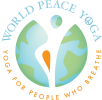Standing Poses Assists
Watch the videos below on assists and take notes. Practice giving the shown assists to a friend/family member.
Basics of Physical Assists in Poses:
A yoga assist is not a correction. Correcting a practitioner in a pose is a way of saying I’m right and you’re wrong. Rather, a yoga assist may be viewed as an enhancement. We are then assisting and guiding practitioners with enhancing their form, rather than “correcting” them. Often when someone feels as though they are being corrected, feelings of inadequacy may come up (“Oh, I can’t do anything right.”)
When we enhance a pose for a practitioner, we lead them to where they are able to feel the pose the best for their body and in some way empower them to get there on their own or take them deeper.
Steps in physical assisting of poses:
- Get permission from practitioner.
- Observe the practitioner.
- Approach the practitioner so that they know you are there.
- Ground the practitioner, make them feel steady.
- Align the practitioner with touch; allow them to melt or relax into the pose or resist the pose using Proprioceptive Neuromuscular Facilitation, PNFtechniques (PNF is often a combination of passive stretching and isometrics contractions used to increase range of motion). Example: In warrior pose having the practitioner press their knee into your hand, aligning the knee over the second toe OR having a practitioner resist pressure your applying in a pose and then you release & they relax into it.
- Move the practitioner deeper into the position (maybe).
- Stay with the practitioner as they integrate and understand what you’re assisting them with physically.
- Stay attentive/connected to the class as a whole.
- Match the action of the physical assist being given with verbal cues so that the practitioner better understands the assist and the class as whole may self-assist
- Assist the practitioner out of the pose (adjust both sides if applicable).
- Gradually ease yourself away from the practitioner.
- If you are not comfortable giving a physical assist for a particular pose or at all, do not physically assist. Instead use verbal assists for alignment and posture enhancement. Show practitioners how to use their own body to align. Props may also be used as a form of assisting.
Physical assists are used to guide practitioners to new places and to encourage them with letting go of old habits. Assists are typically given first to the practitioners that look like they may potentially be injured by the way they are holding the pose, to practitioners that look like they are in pain, or are holding their breath.
There is to be a balance of the assists given to practitioners in a class. It may be very tempting to give extra attention to the new practitioners. Do your best to give equal attention to everyone in the class. Allow the new practitioners to feel empowered by being able to practice postures on their own without any assistance. Each practitioner in the class is given equal attention. It’s good to just let the yoga work on the new practitioners and let them be; unless of course what they are doing might be potentially injurious.
This first video covers all the major posture categories. It may be used as a reference and reminder of assists you may give.
These next few videos focus on standing postures.
